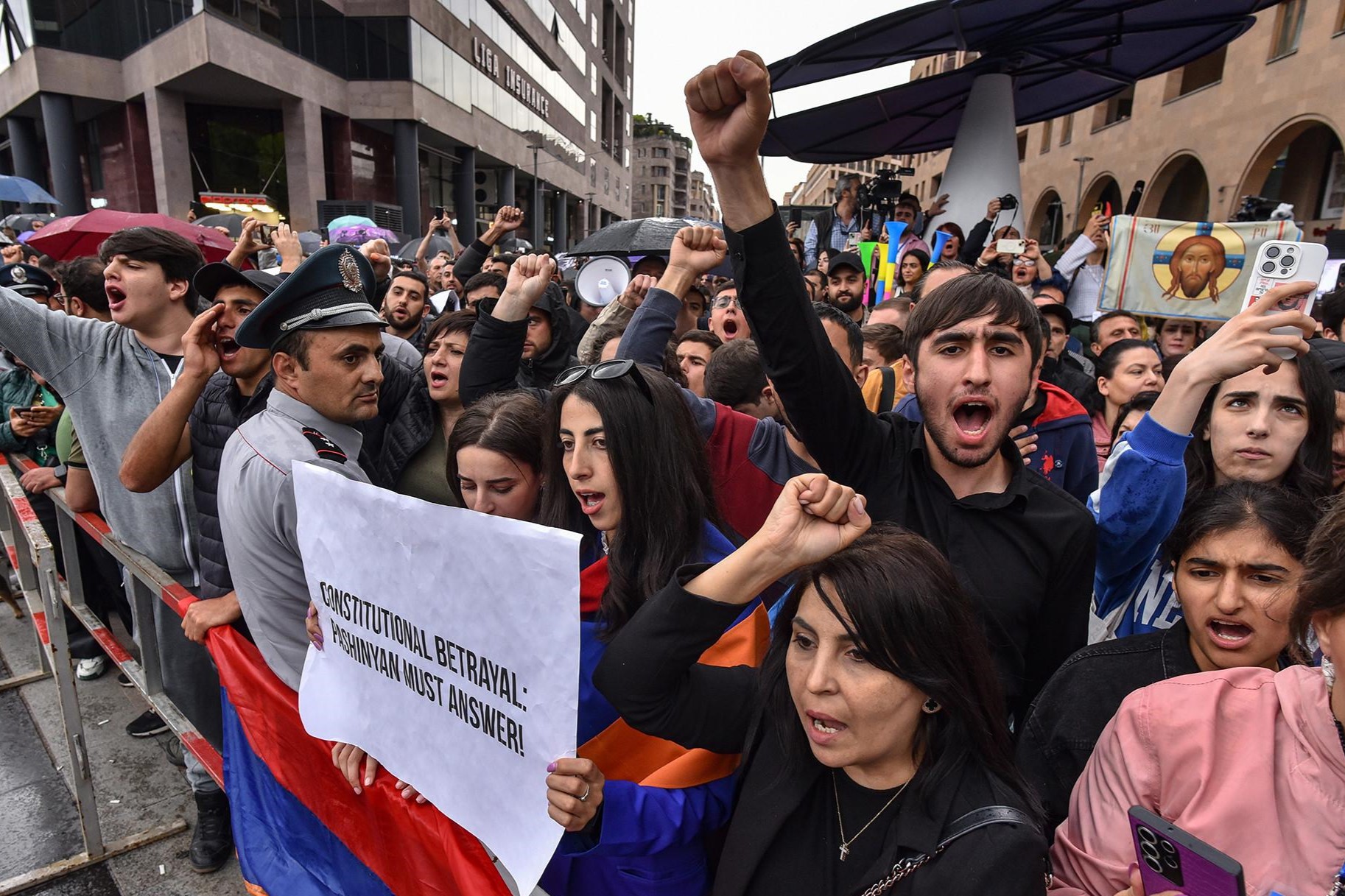
Protests against the decision of Armenia’s government to hand over territory to Azerbaijan have been continuing for almost a month, with thousands taking to the streets in the country’s capital and border villages.
In the past week, Armenia’s most prominent opposition groups have stated their support for the protesters, who are led by Archbishop Bagrat Galstanyan. Galstanyan and his supporters are calling for the handover of land in northeastern Tavush province to be halted, and for Prime Minister Nikol Pashinyan to resign.
[Read more: Protesters demand Armenian Prime Minister’s resignation over border delimitation deal]
‘This is not just about land; it’s about our security and our future’, said Edmon Marukyan, a former Pashinyan ally and the founder of the Bright Armenia party.
On Thursday, the parliamentary opposition announced that the agreement signed by Armenia and Azerbaijan’s border delimitation commissions was illegal, as were any actions taken on its basis.
Tigran Abrahamyan, secretary of the I Have Honour faction, stated in front of the government building that the withdrawal of Armenian troops must be approved by the Constitutional Court and ratified by parliament.
‘Without these procedures, this process is completely illegal’, said Abrahamyan. ‘Regardless of what maps they do this on the basis of […] the surrender of any centimetre of Armenia’s territory can only happen through a referendum’.
The four villages that are being transferred to Azerbaijan’s control — Baghanis Ayrym, Ashagi Eskipara, Kheyrimli, and Gizilhajili — have been abandoned since Armenia took them during the First Nagorno-Karabakh War.
Despite significant public demonstrations in the days since the Tavush for the Motherland group, led by Archbishop Galstanyan, arrived in Yerevan on 9 May, Pashinyan hailed the start of the demarcation process as a ‘great success’ in a government session on 16 May.
‘A very important cornerstone for the further development of Armenia’s sovereignty and independence has been laid’, said Pashinyan.
Growing protests
Galstanyan has been leading protests and meeting with opposition leaders for over a week, holding protests outside the European Bank for Reconstruction and Development’s (EBRD) annual forum, this year held in Yerevan.

The protest movement began in Tavush, with Galstanyan leading a group of protests on foot from Kirants to Yerevan, where over 20,000 protesters attended the largest anti-government protest thus far on 9 May.
Outside the EBRD venue on 15 May, Galstanyan addressed the few hundred protesters who gathered, mocking police guarding the venue and chanting ‘Nikol traitor’.
Galstanyan suggested that the heightened security around the conference venue was proof that the Armenian authorities were ‘living in fear’ of his movement.
Police have increasingly cracked down on protesters in Yerevan, who have adopted roadblocks as their primary method of civil disobedience. Around 200 protesters have been detained in the capital, with opposition representatives accusing the police of using disproportionate force against them.
Roads have also been blocked outside of the capital, with residents of the village of Kirants having blocked the road to Georgia since Wednesday.
The demonstrators demand that representatives from the ruling Civil Contract party, as well as officials from the demarcation committees, address their concerns directly in Kirants with the media present.
Azerbaijan and Armenia’s border delimitation commissions signed the agreement on 15 April, agreeing to delimit the border on the basis of a 1976 Soviet Armed Forces map. The agreement affects several key border areas, with control of four abandoned villages and the Kirants bridge to be handed over to Azerbaijan. A new road is additionally expected to be built in the next two to three months.
The demarcation process began in mid-April, with columns erected on stretches of the Tavush-Gazakh border using the 1976 maps as a base, while adjusting the actual map in light of the relief and challenges on the ground. The adjustments, however, did not prevent some Armenians from losing their houses, as they crossed the border. Armenia’s government has acknowledged that some people in the region will lose their land but has promised to compensate them, while not providing specific details.
According to Pashinyan, in the demarcated areas, regular troops are in the process of being replaced by border guards. Russian border guards deployed to the Armenia-Azerbaijan border following the 2022 tensions will also be withdrawn.
[Read more: Russia and Armenia agree on withdrawal of border guards]
The border areas in question have been a point of contention since the early 1990s when Armenian forces captured Azerbaijani villages in the region, with Azerbaijan simultaneously seizing agricultural land belonging to villages in Tavush. The 15 April agreement does not return any Azerbaijani-occupied Armenian land, a fact that has been highlighted by critics of the deal.








